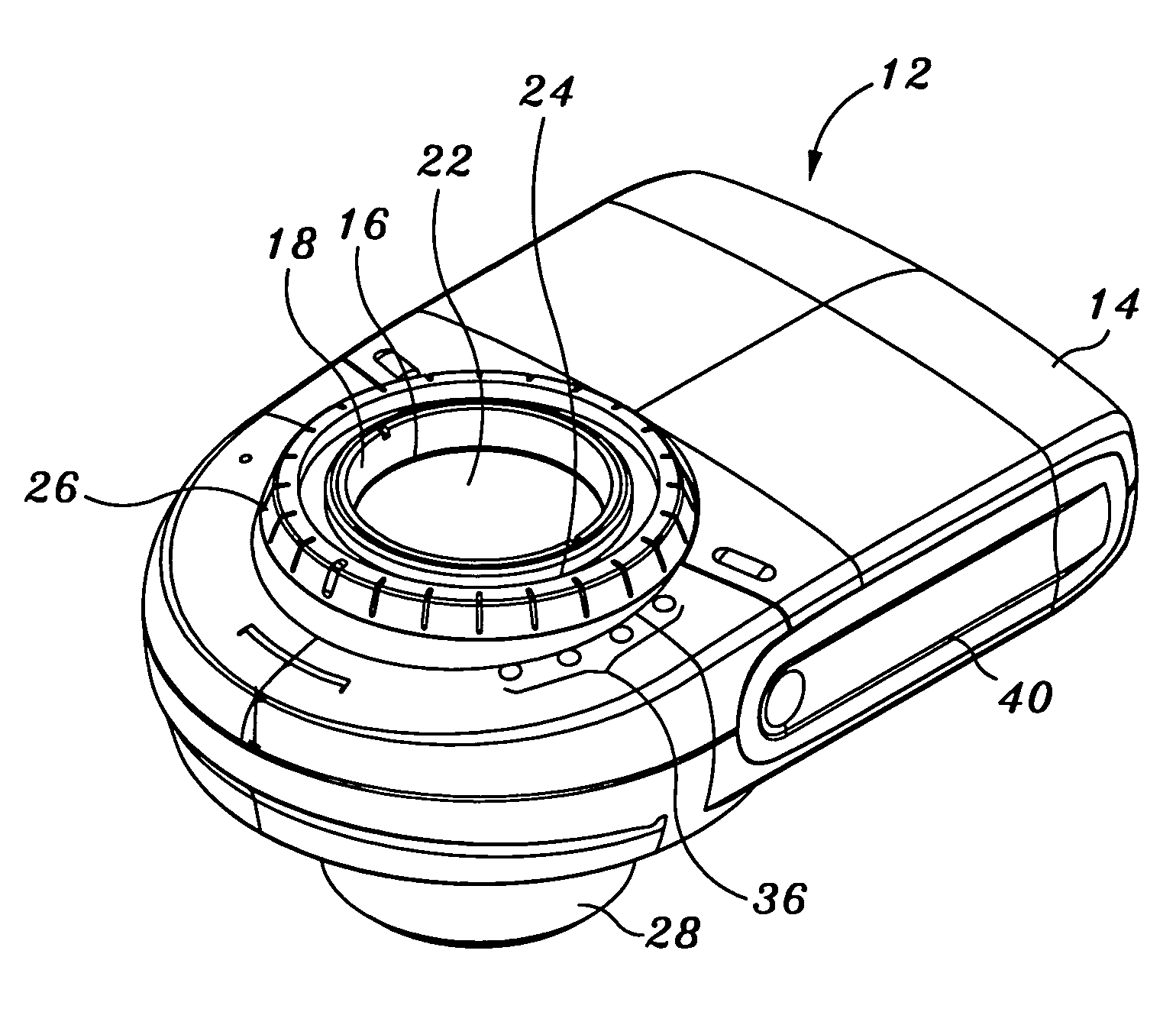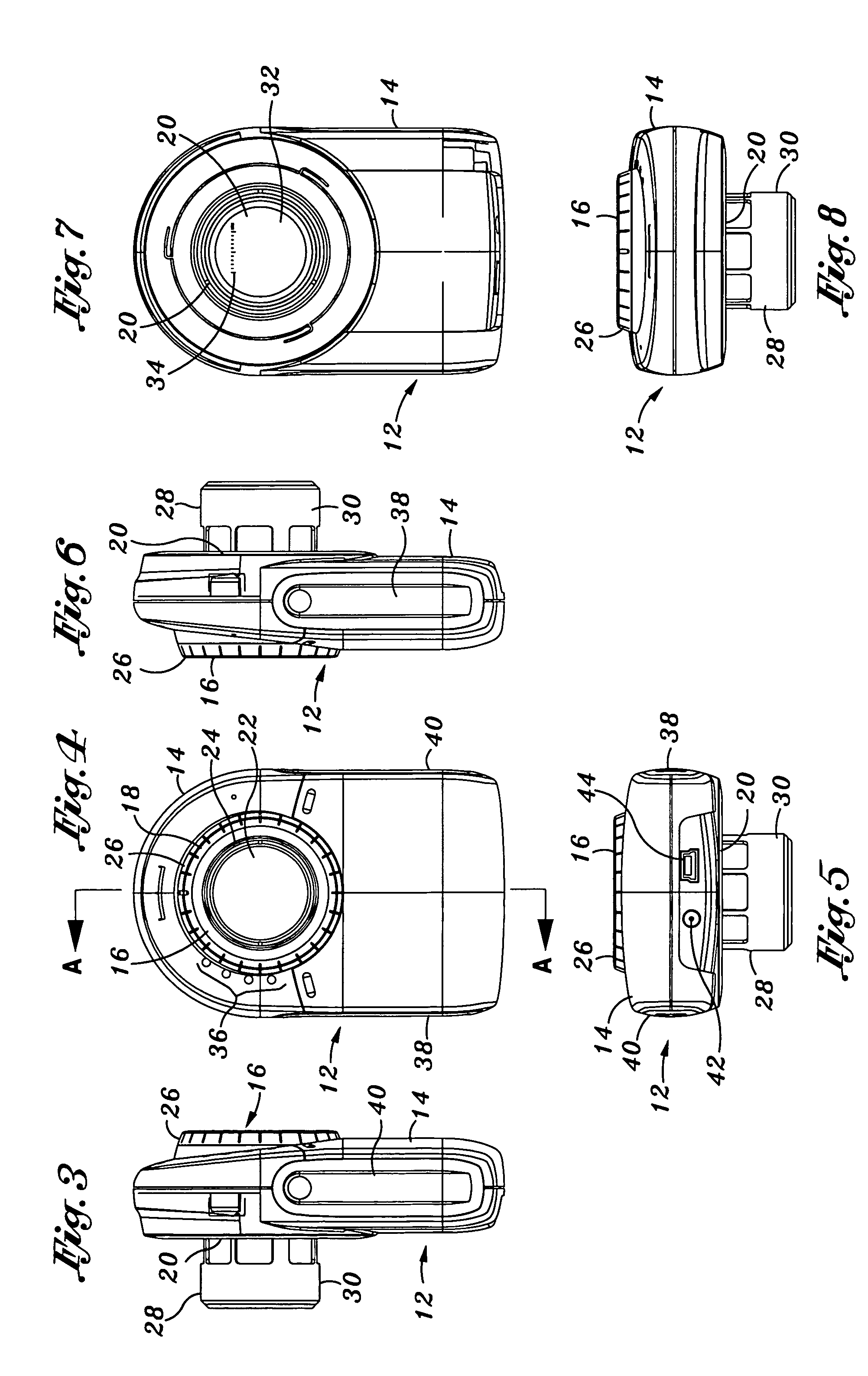Dermoscopy epiluminescence device employing multiple color illumination sources
a technology of epiluminescence device and dermoscopy, which is applied in the direction of fluorescence/phosphorescence, instruments, optical radiation measurement, etc., can solve the problems of reducing the capability of the dermatoscope for imaging the telangiectesia, wasting time and money for the physician, and affecting the image quality of the dermatoscop
- Summary
- Abstract
- Description
- Claims
- Application Information
AI Technical Summary
Benefits of technology
Problems solved by technology
Method used
Image
Examples
first embodiment
[0061]Referring particularly to FIGS. 9–11, the device of the present invention is shown. In FIG. 10 the device 12 is shown from a bottom perspective exploded view, and in FIG. 11 the device 12 is shown from a top perspective exploded view. The housing 14 is formed from top housing component 14a and bottom housing component 14b. Both components 14a and 14b include apertures for receiving a lens assembly 50, and accommodating a lighting array 46. The lighting array comprises a ring of LEDs affixed to an circuit board 48. The circuit board 48 is secured within the housing 14. The LEDs comprise four different colored sets of LEDs each on a different lighting circuit. The four colors comprise White, UV / Blue (405 nm), green / yellow (565 nm) and orange / red (630 nm). White is contemplated for normal epiluminescence imaging, U / Blue for ALA florescence and autoflouresence imaging an, green / yellow for superficial blood vessel imaging and orange / red for deeper blood vessel imaging. Although the...
second embodiment
[0070]Thirty two light emitting diodes of the array 46 ring the circuit board. The diodes are preferably white high light output Indium Gallium Nitride LEDs, however any suitable lighting diodes are appropriate. The even diodes are on a single circuit and the odd diodes are on a separate single circuit. In the second embodiment, the LEDs are a standard white LED made with phosphorescence phosphors to create white light. It is additionally contemplated by the present invention that tri-colored LEDs, with individual red, green and blue LEDs that can combine form white light may be utilized. It is contemplated by the present invention that the LEDs may have focusing lenses to concentrate the light into a smaller and tighter beam. The LEDs may additionally be comprised of indium gallium arsenide material, or any other like semiconductor material. A switch may initiates half of the every other light source, which are the eight even diodes and the switch also initiates the second light so...
PUM
| Property | Measurement | Unit |
|---|---|---|
| size | aaaaa | aaaaa |
| size | aaaaa | aaaaa |
| diameter | aaaaa | aaaaa |
Abstract
Description
Claims
Application Information
 Login to View More
Login to View More - R&D
- Intellectual Property
- Life Sciences
- Materials
- Tech Scout
- Unparalleled Data Quality
- Higher Quality Content
- 60% Fewer Hallucinations
Browse by: Latest US Patents, China's latest patents, Technical Efficacy Thesaurus, Application Domain, Technology Topic, Popular Technical Reports.
© 2025 PatSnap. All rights reserved.Legal|Privacy policy|Modern Slavery Act Transparency Statement|Sitemap|About US| Contact US: help@patsnap.com



